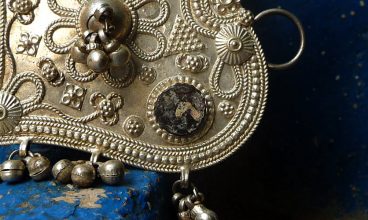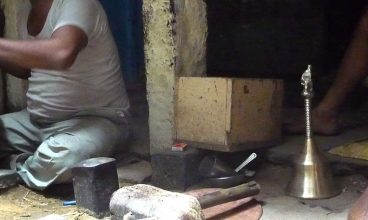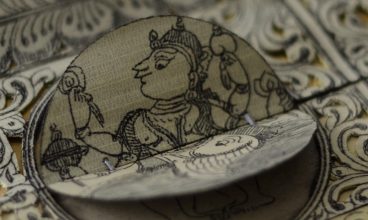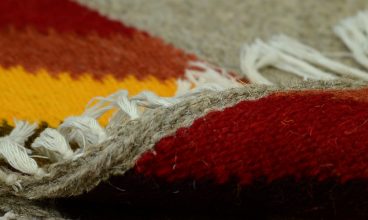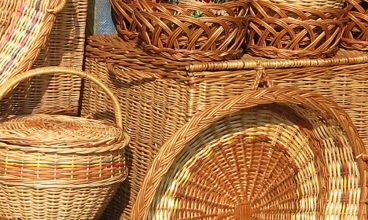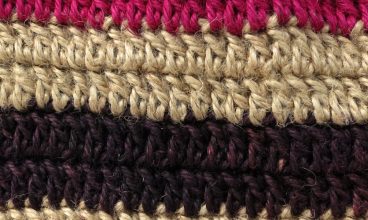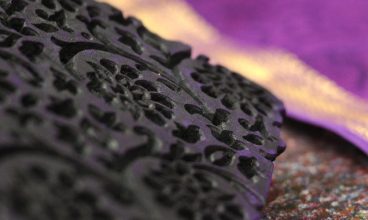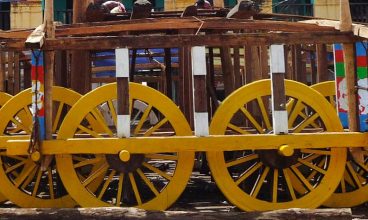A display of superior craft skill, the silver jewelry of Kutch is more than just ornamentation. They serve as markers used to differentiate various tribes of the region. Their simplified forms and elaborate textures employ techniques of high precision. Each piece of jewelry has a definitive purpose and is worn as per the age, handed […]
Read MoreMusic, they say, is the silence between two notes. The silence becomes even more omnipresent as it makes rare appearances between the constant sounds of metal being beaten in the ‘Thatheron ki gali’. This street in Jaipur is a home to utensil makers, locally known as the ‘thathere’ and is as old as the city […]
Read MoreTala pattachithras of Orissa are pin-tip thin paintings etched on a string of palm leaves and highlighted with the black of lampblack or kohl. These palm-leaf illustrations tell stories from mythology and events in daily life.
Read MoreJawaja famous for its leather crafts is equally famous for its colorful jute dhurries. The craft of jute dhurries, a reversible flat-weave rug or mat was initiated during the ‘Rural University initiative’ conducted by IIM and NID in the mid nineteen seventies.The characteristic designs and colors of these carpets are an expression of the village […]
Read MoreNamda are felted rugs that are made by enmeshing wool fibers with water, soap and pressure and then embroidering the resultant fabric. These are extensively used in Kashmiri households as an effective and inexpensive floor covering and mattress.
Read MoreCommonly known as wicker willow, Jammu and Kashmir enjoys a monopolized market for wickerwork. Straws, grass and leaf are used to make domestic containers that are used to store the agricultural produce. The wicker is produced profusely in the entire region and hence becomes one of the main industries.
Read MoreJute is a versatile natural fibre with a golden and silky shine, hence called ‘the golden fibre’. It is the second most important vegetable fibre after cotton. For ages, it has been used to create a wide range of products from sacks, bags and ropes to folders, mats and wall hangings.
Read MoreA lot can be done with a few layers of wax. Batik, the ancient craft form of wax-resist dyeing is practiced in various parts of the world. In this method of printing, desired patterns are made on the fabric with wax and then dyed to get the characteristic patchy patterns. The fabric is washed in […]
Read MoreBlock printing is an ancient technique of textile printing that is practiced even in modern times. Intricately carved wood blocks are used to stamp patterns onto the fabric. The method of dyeing used is ‘resist-dyeing’ where the true colors are revealed after reacting with air.
Read MoreThe religious and festive fervor of the devotees reciting the name of Lord Jagannath syncs perfectly with the clinking of the bronze temple bells as thousands of people gather around the majestic and breathtakingly enormous chariots of Lord Jagannath and his siblings at the Puri Rath Yatra. These Raths imbibe the magic and magnificence of […]
Read More

